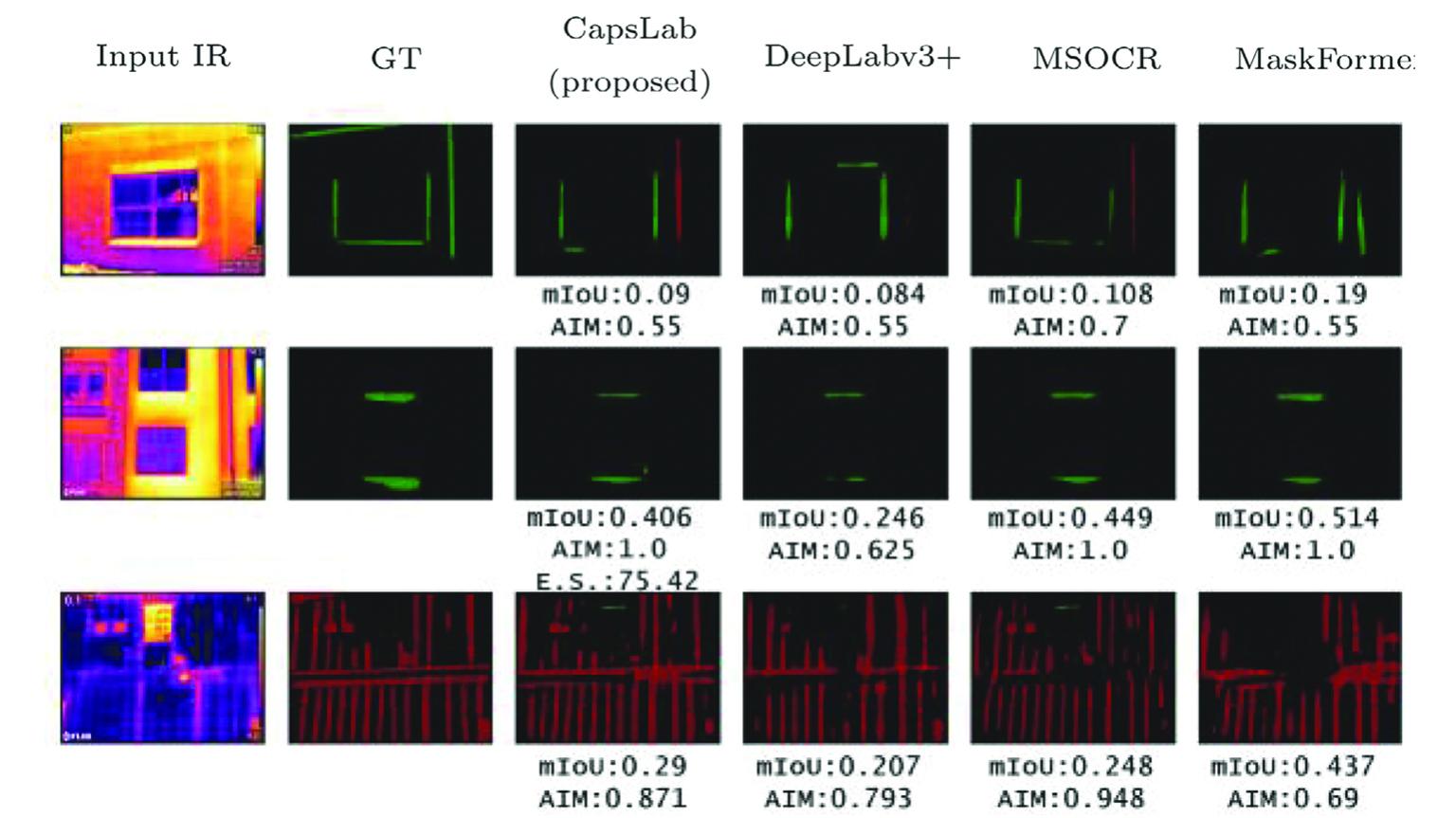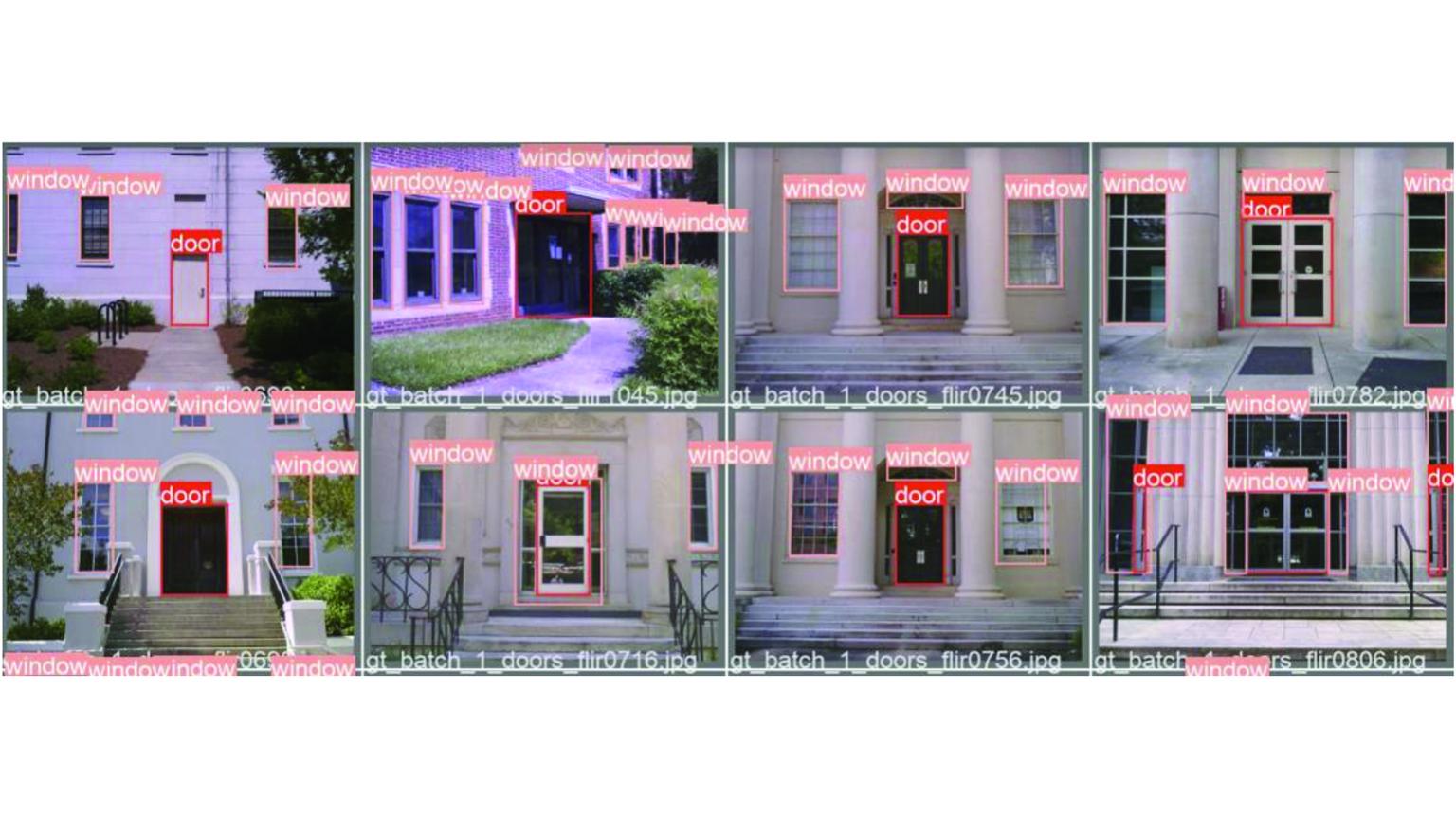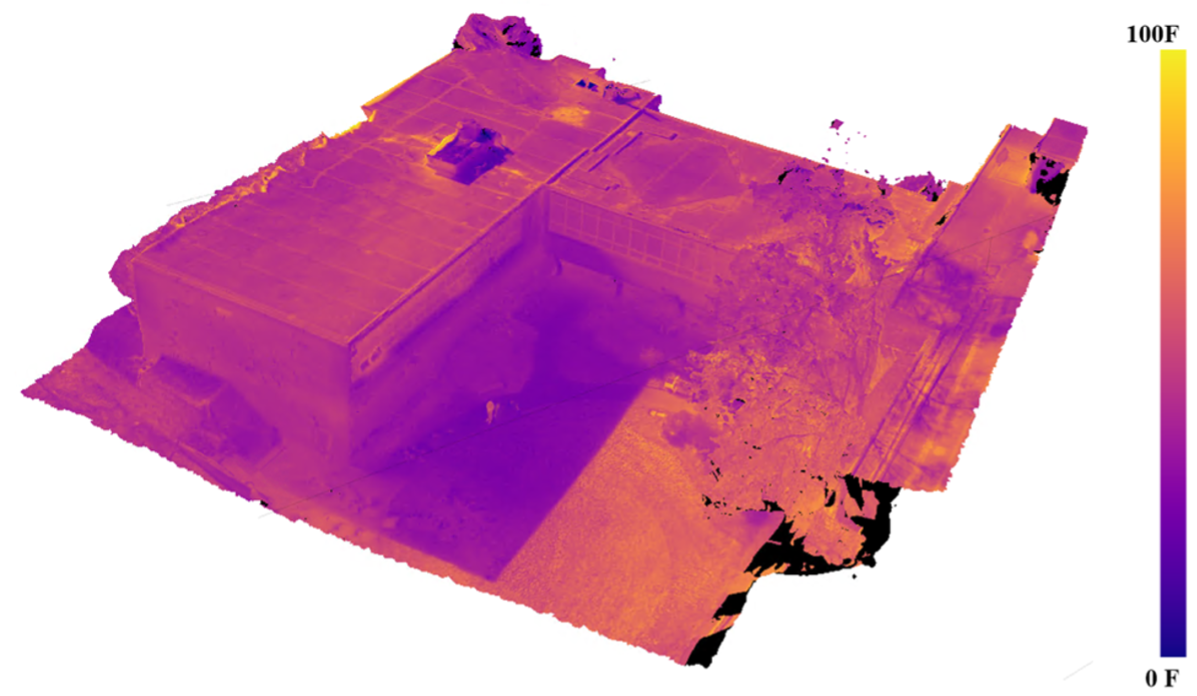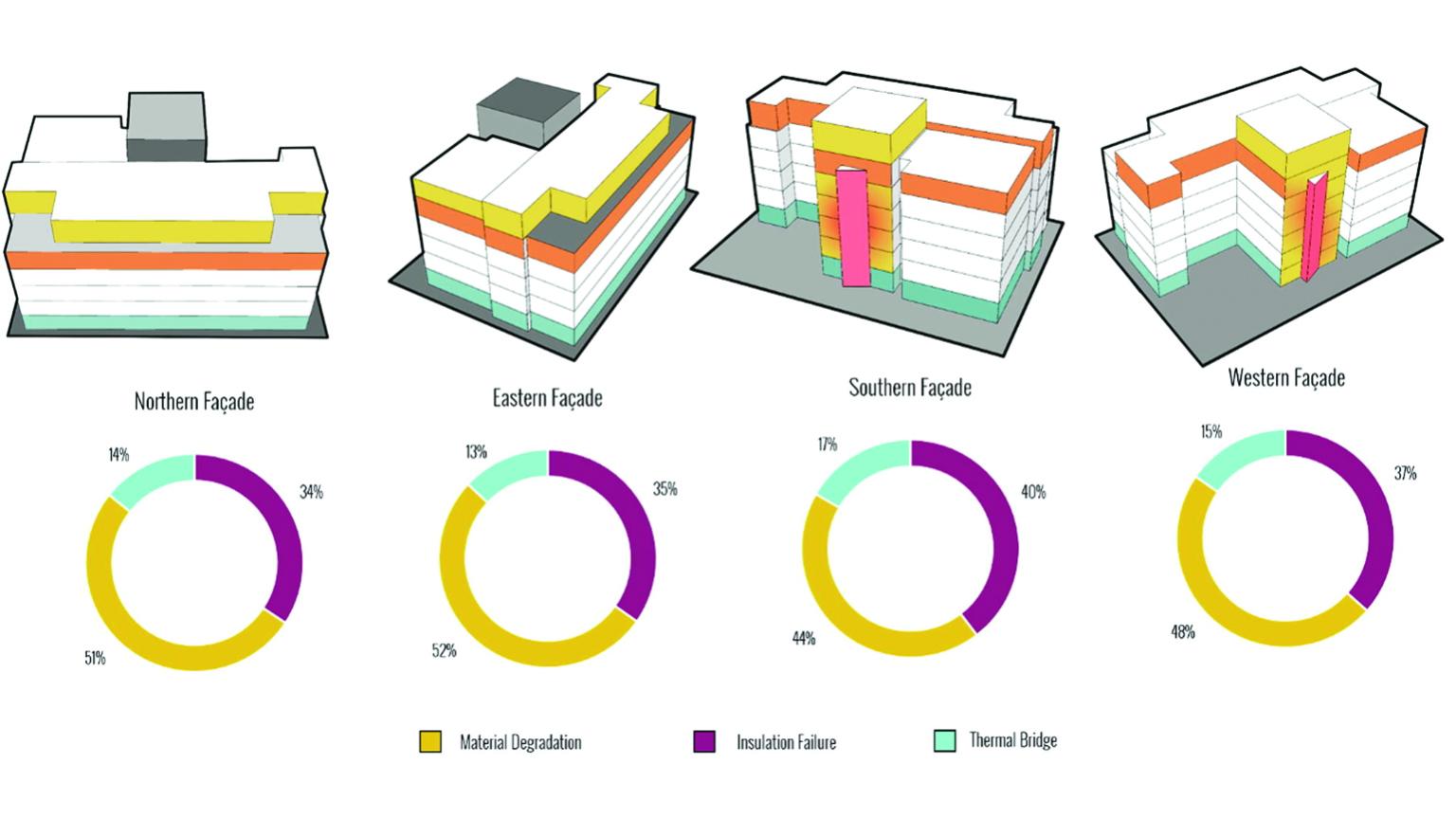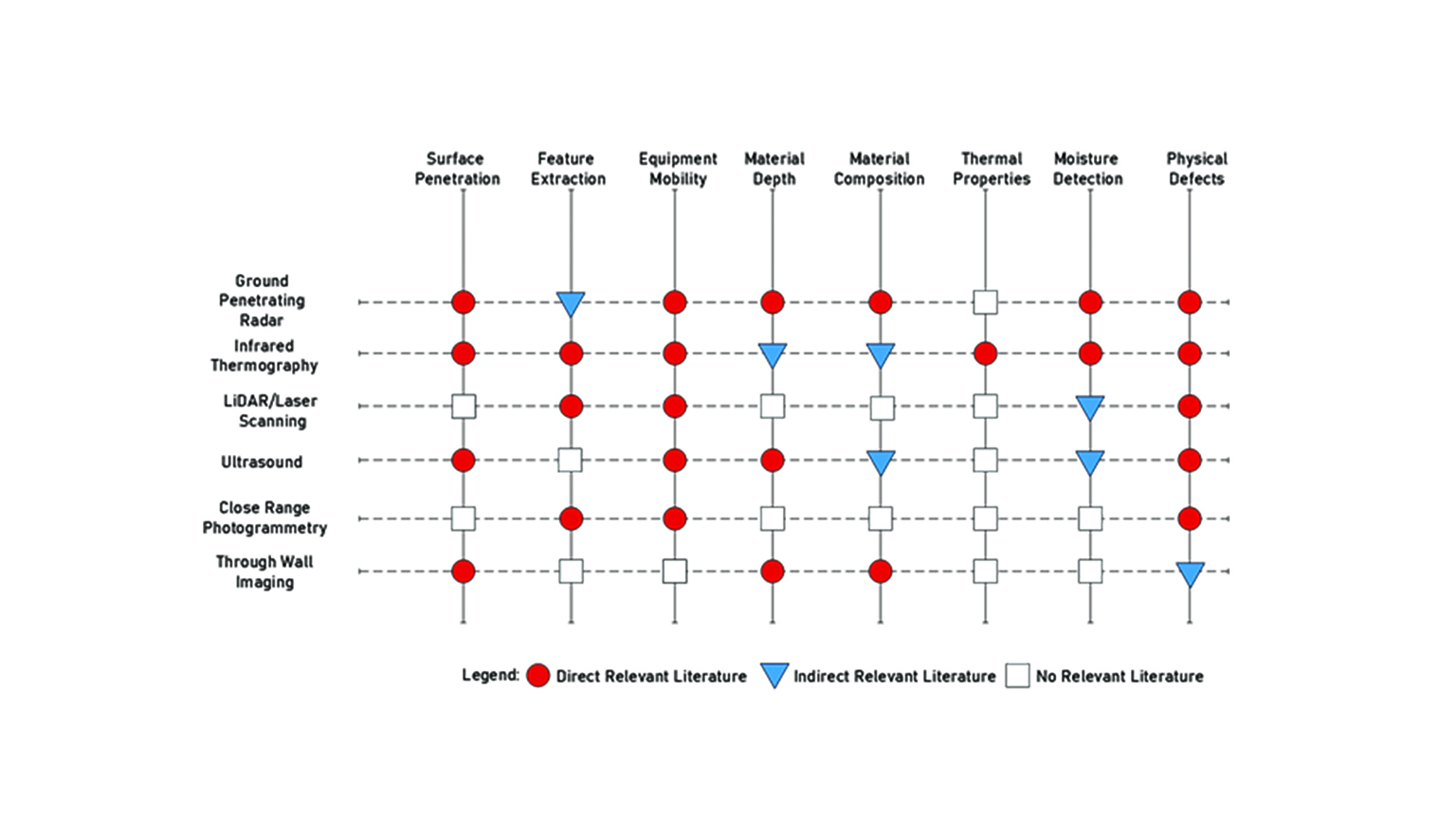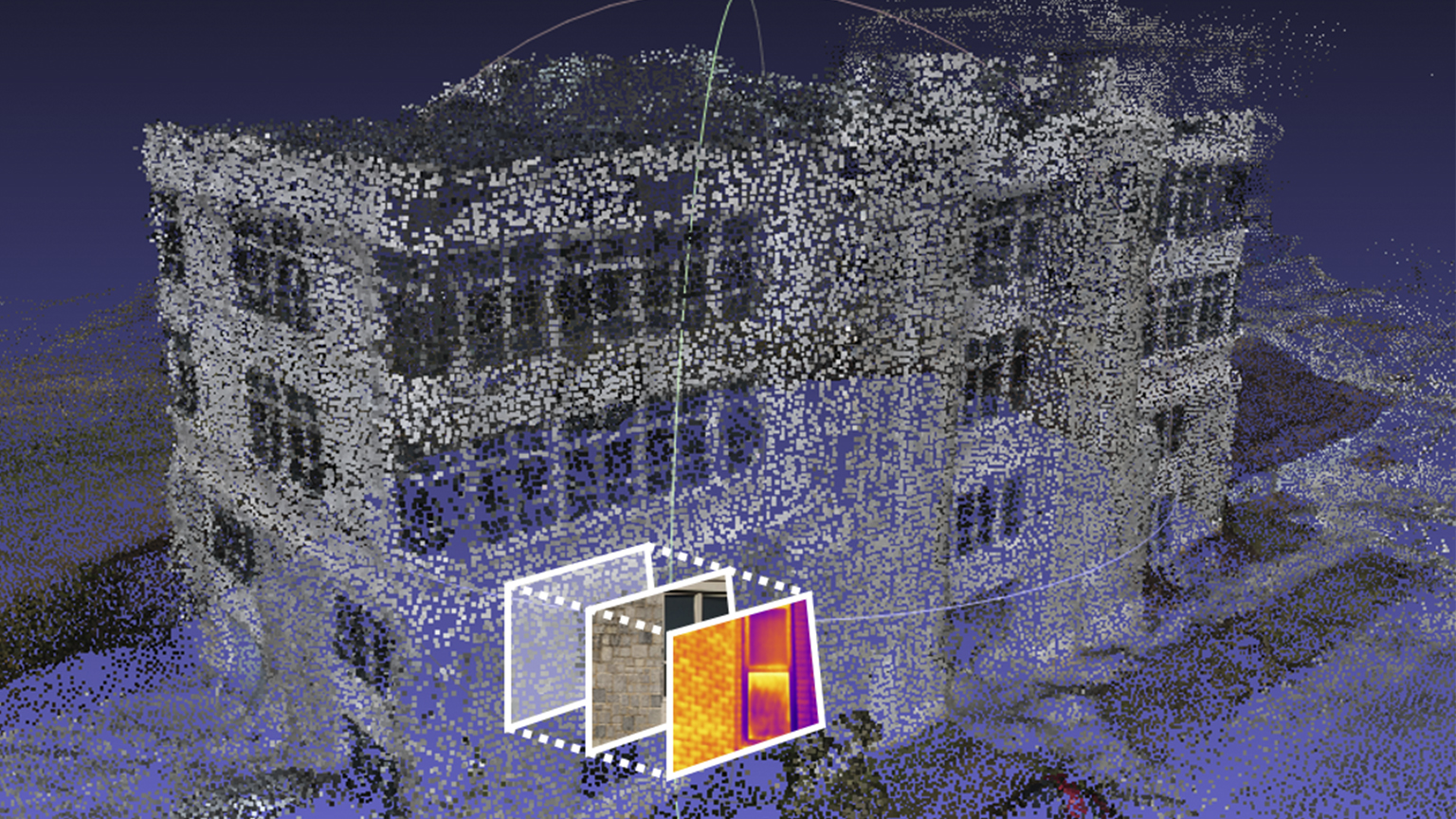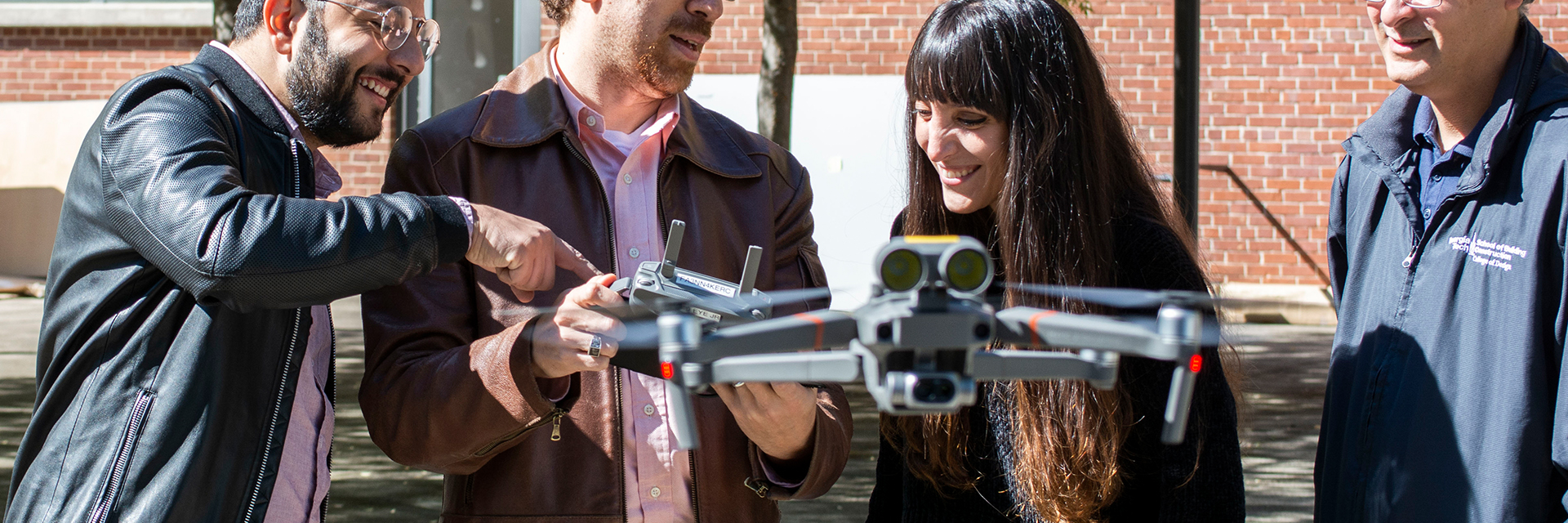
Aerial Diagnostics
The Aerial Diagnostics group focuses on the use of Unmanned Aerial Vehicles (UAVs) for analytical applications in the built environment. We utilize the unparalleled vantage points drones offer to explore novel ways of surveying buildings and diagnosing anomalies with a myriad of different drone-borne sensors. Research within the group goes beyond the practical application of drones and transcends into synthesizing computational solutions based on Machine Learning (ML) and Computer Vision (CV) techniques to automate and streamline surveying and diagnostics tasks and data gathering processes.
Using the HPBL’s drone fleet, varying in sizes and payloads, the group has utilized this technology in various capacities. We employ drones to inform Building Energy Models (BEM) through the development of a pipeline that begins with a drone survey of a building and ends with an accurate representation of anomalies on a BEM ready for simulation. The group has explored the integration of drones with ASHRAE Standard 211P for Commercial Audits and integration of various Nondestructive Testing (NDT) techniques in that process. As well as utilizing aerial photogrammetry techniques coupled with thermal imaging to produce 3D models.
